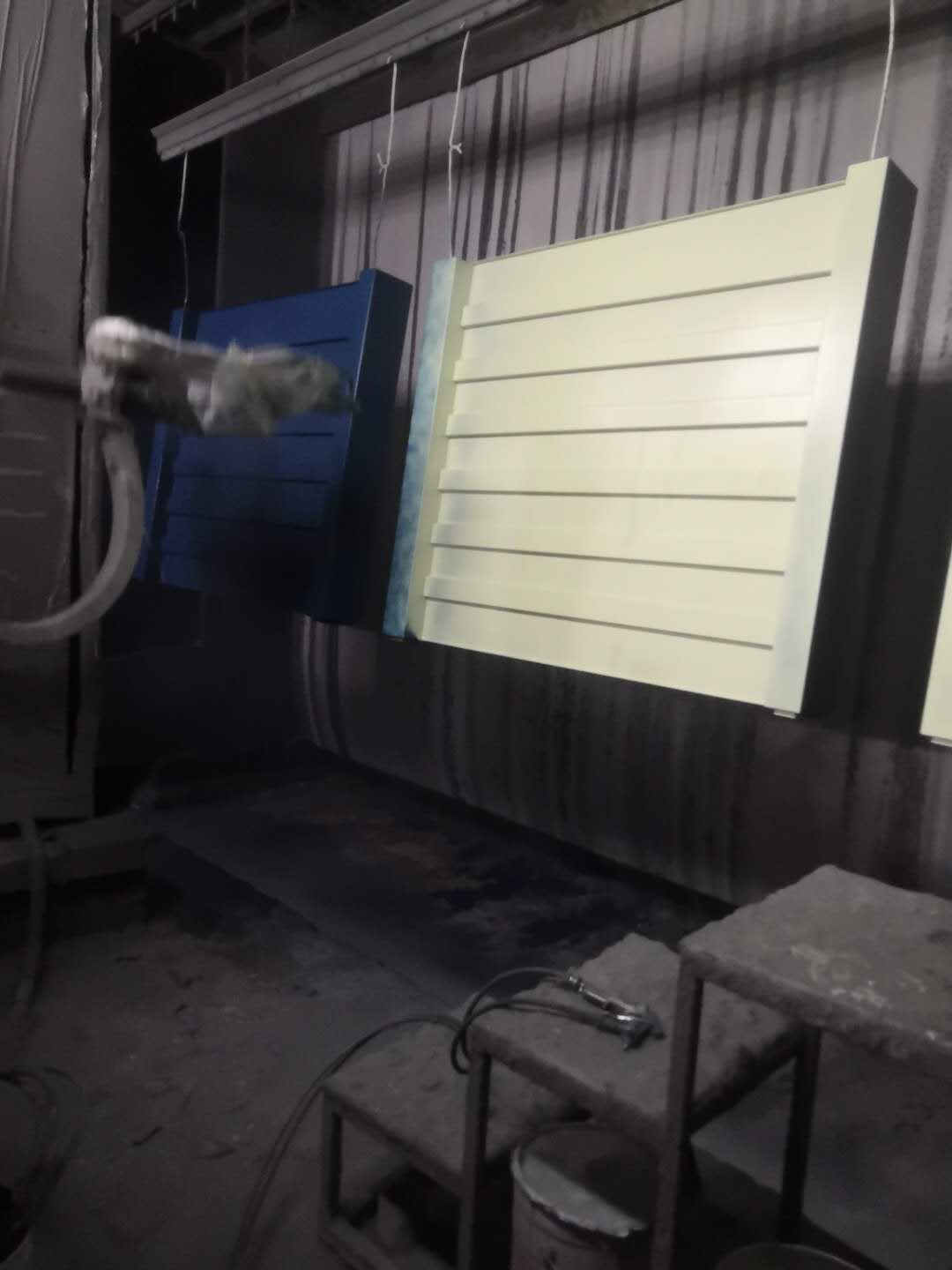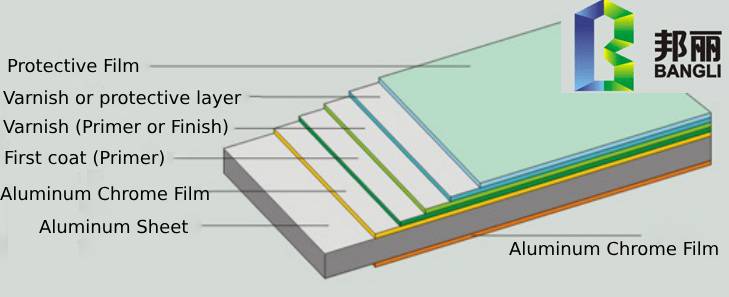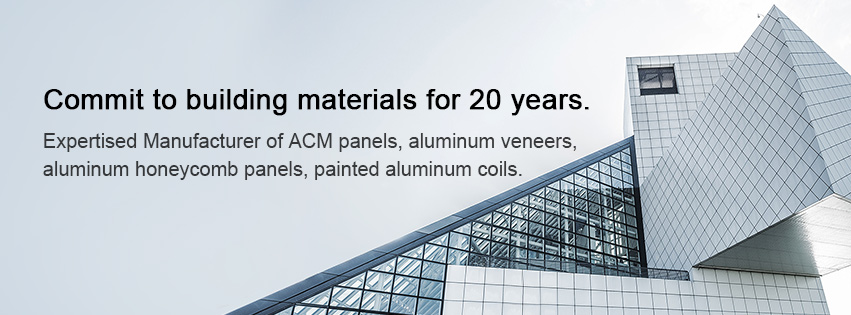Five key points of fluorocarbon aluminum veneer in construction
The curtain wall aluminum fluorocarbon veneer is a new type of ceiling, interior wall, and exterior wall decoration material, which is based on a high-quality aluminum alloy plate, formed by numerical control bending technology and sprayed with decorative paint on the surface. The base material of aluminum veneer adopts 1100h24, 1060h24, 3003h24, 5005h24 and other special aluminum alloy plates for curtain wall. The main structure of the fluorocarbon aluminum veneer is composed of panel, stiffener and corner code. The maximum size of the workpiece can reach 2100mm × 6000mm (W × L).
The general coating paint adopts famous brands such as PPG, Valspar, AkzoNobel, KCC and so on. The coating is divided into one coat, one bake; three-coat, two bake; four coats, and three bake. The coating performance meets the AAMA 2605-98 standards of AAMA (American Construction and Manufacturing Association) and ASCA (American Construction and Spraying Association).
Aluminum Veneer Spraying
Fluorocarbon spraying aluminum veneer has the advantages of excellent fade resistance, corrosion resistance, UV resistance, crack resistance, and can withstand harsh weather environment, a wide selection of colors, good metal luster, strong impact resistance, etc. Five key points should be reserved in the construction process of fluorocarbon spraying aluminum veneer:
1. In the process of fluorocarbon spraying aluminum veneer, it is not necessary to process all aluminum veneers at one time. The final aluminum plate and corner plate in each unit area shall not be processed temporarily. After all fluorocarbon spraying aluminum veneer devices in this area are completed, the field data shall be measured again to get the accurate scale of reprocessing, so as to prevent unnecessary rework and economic loss.
2. The most common and difficult quality problem for the installation method of fluorocarbon spraying aluminum veneer is the uneven joint between blocks, which should be paid enough attention. In addition to paying attention to whether the thickness of the adhesive is uniform and consistent in the construction process, it should also be noted that the method of temporarily fixing the plate should not be withdrawn too early, generally not less than 12h.
3. For the fluorocarbon spraying aluminum veneer installed by post, the glass magnesium board or large core board with waterproof performance shall be used as the bottom board, and the gypsum board shall not be used. Main reasons: first, the strength of the gypsum board itself is low, and the bonding with the aluminum board is not solid; second, the gypsum board is not waterproof, and there are various drainage pipelines in the ceiling generally, once there is partial leakage, it will cause the overall fall of the aluminum veneer.
4. As an important process before the processing of fluorocarbon spraying aluminum veneer - field data measurement, it is suggested to use the infrared rangefinder for measurement. If the traditional tape is used for measurement, there will be measurement errors, which will have a bad impact on the aluminum plate requiring close seam splicing.
5. The fluorocarbon spraying aluminum veneer belongs to a metal decoration board, but its fluorocarbon spraying layer is easy to scratch. Therefore, in addition to the need for the manufacturer's aluminum plate to enter the construction site with a protective film, attention should also be paid to prevent the aluminum veneer from scratching or being hit by heavy objects in the process of transfer and installation. Otherwise, it will seriously affect the overall appearance of the aluminum veneer.
The composition and structure of the aluminum veneer curtain wall may be of great interest to many people. The aluminum veneer curtain wall we often see has a very beautiful appearance, and the decorated buildings always make people think it is very amazing. Then how is such an exterior wall constructed and what structures are there? In this regard, Bangli summarized the following data materials for you as a reference.
The structure of Fluorocarbon Aluminum Veneer
Composition Diagram of Aluminum Veneer
Structure of aluminum veneer curtain wall
Its structure is mainly composed of panel, stiffener and corner code. Corner code can be directly bent and stamped by the panel, or it can be riveted on the small side of the panel. The reinforcing rib is connected with the electric welding screw (the screw is directly welded on the opposite side of the plate surface) behind the plate surface, making it a solid whole, greatly enhancing the strength and rigidity of the aluminum curtain wall, ensuring the flatness and anti-wind and anti-seismic ability in long-term use. If sound insulation is needed, efficient sound insulation material can be installed inside the aluminum plate.
The structure of the aluminum veneer curtain wall is basically the same as that of the stone curtain wall. There are two installation methods: direct installation and skeleton installation. Different from the stone curtain wall structure, the aluminum panel adopts the method of folding edge and auxiliary frame to form the assembly, and then it is installed.
Of course, the structure of the aluminum veneer curtain wall is not unchangeable, which depends on the field use. However, the principle remains unchanged: on the premise of ensuring stable installation, the simpler the design structure and the more convenient and efficient in the installation, the lower the cost of manual installation. It is also an important factor that architectural designers must consider.
In the past 21 years, Bangli building materials has focused on the R & D and production of aluminum veneer curtain wall decoration materials, focusing on the production of aluminum veneer curtain wall, aluminum veneer customized service, aluminum honeycomb panel, perforated aluminum panel, aluminum composite material panel, and other building wall cladding panel materials products. Bangli team sincerely serves you 24 hours, welcome to consult at any time.










